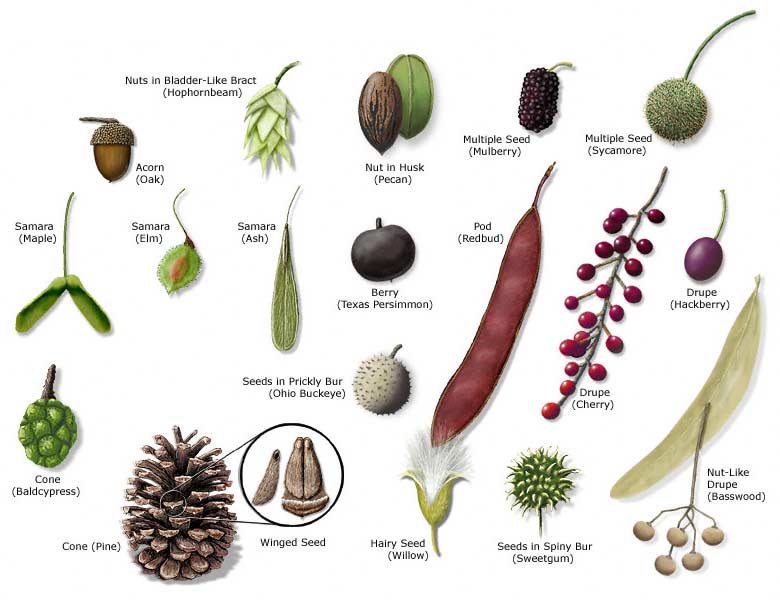To identify the fruits and seeds and their types
PRINCIPLE:
I. Simple Fruits: A single ripened ovary from a single flower.
A. Fleshy Fruits: All of most of the ovary wall (pericarp) is soft or fleshy at maturity.
1. Berry: Entire pericarp is fleshy, although skin is sometimes tough; may be one or many seeded. E.g. grape, tomato, papaya, pomegranate, sapote, persimmon, guava, banana and avocado. The latter two fruits are often termed baccate (berry-like).
parthenocarpic berry
The banana fruit is a seedless, parthenocarpic berry developing without pollination and fertilization.
2. Pepo: Berry with a hard, thick rind; typical fruit of the gourd family (Cucurbitaceae). E.g. watermelon, cucumber, squash, cantelope and pumpkin.
3. Hesperidium: Berry with a leathery rind and parchment-like partitions between sections; typical fruit of the citrus family (Rutaceae). E.g. orange, lemon, grapefruit, tangelo and kumquat.
4. Drupe: Fleshy fruit with hard inner layer (endocarp or stone) surrounding the seed. E.g. peach, plum, nectarine, apricot, cherry, olive, mango and almond.
5. Pome: Ovary or core surrounded by edible, fleshy receptacle tissue (hypanthium or fleshy floral tube) that is really not part of the pericarp.apple, pear, quince and loqua
B. Dry Fruits: Pericarp dry at maturity.
1. Dehiscent Dry Fruits: Pericarp splits open along definite seams.
a. Legume: An elongate "bean pod" splitting along two seams; typical fruit of the third largest plant family, the legume family (Leguminosae or Fabaceae).
b.Capsule: Seed pod splits open is various ways and usually along several definite seams. Capsules typically split open into well-defined sections or carpels which represent modified leaves. This is a very common dry fruit found in many different plant families. E.g. Catalpa, Jacaranda, Pittosporum, Aesculus, Agave, Yucca, Eucalyptus,
Nut: Larger, one-seeded fruit with very hard pericarp, usually enclosed in a husk or cup-like involucre
beech, Cashews ,peanut (Arachis hypogea)
II. Aggregate Fruits: A cluster or aggregation of many ripened ovaries (fruits) produced from a single flower. In blackberries and raspberries (Rubus), strawberries
III. Multiple Fruits: A cluster of many ripened ovaries (fruits) produced by the coalescence of many flowers crowded together in the same inflorescence, typically surrounding a fleshy stem axis. E.g. mulberry, osage orange, pineapple, breadfruit and jackfruit.


RESULT:
fruits and seeds of pineapple, jackfruit,orange,apple,lemon,pomegranate, sapote,guava, banana were observed
No comments:
Post a Comment